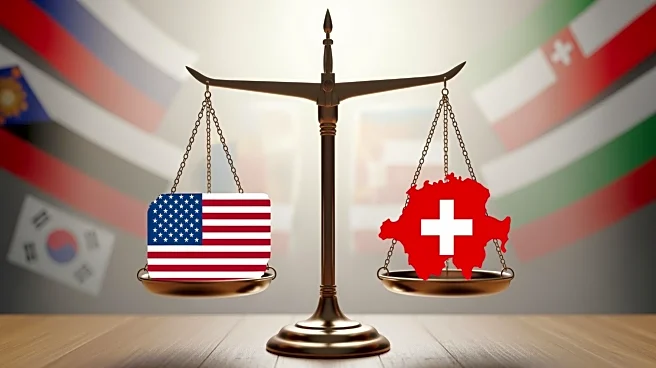What's Happening?
The United States and Guatemala have reached a Framework for an Agreement on Reciprocal Trade, aiming to strengthen their economic relationship. This agreement builds on the existing Dominican Republic-Central
America-United States Free Trade Agreement (CAFTA-DR) and includes commitments from Guatemala to address non-tariff barriers, streamline regulatory requirements, and enhance intellectual property protection. The framework also focuses on facilitating digital trade, improving labor rights, and maintaining high environmental standards. The agreement is expected to enhance supply chain resilience and innovation, with both countries working towards finalizing and signing the agreement soon.
Why It's Important?
This trade framework is significant as it aims to bolster economic ties between the U.S. and Guatemala, potentially increasing market access for U.S. exports and fostering a more balanced trade relationship. By addressing non-tariff barriers and enhancing regulatory cooperation, U.S. businesses could benefit from reduced trade costs and increased export opportunities. The agreement also underscores a commitment to high standards in labor and environmental protection, which could lead to improved working conditions and sustainable practices in Guatemala. This development may also serve as a model for future trade agreements with other countries in the region.
What's Next?
In the coming weeks, the United States and Guatemala will work to finalize the agreement, prepare it for signature, and complete domestic formalities. The U.S. plans to remove reciprocal tariffs on certain Guatemalan exports, which could lead to increased trade flows. Stakeholders, including businesses and policymakers, will likely monitor the implementation of the agreement closely to assess its impact on trade dynamics and economic growth in both countries.











